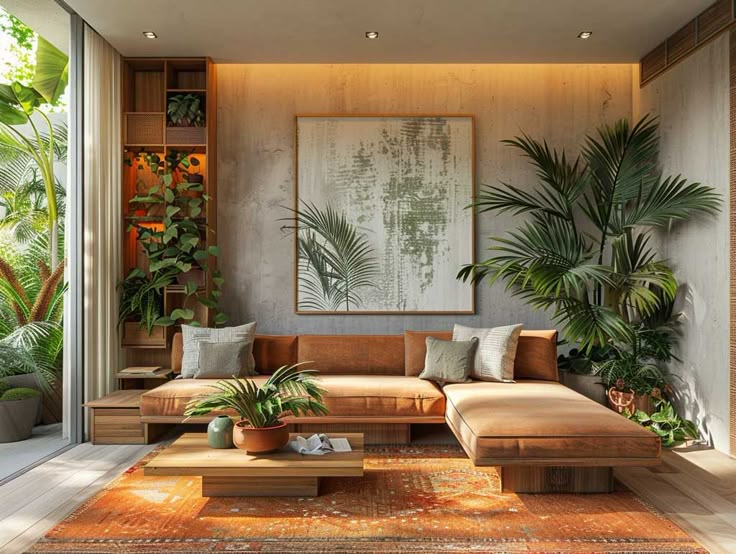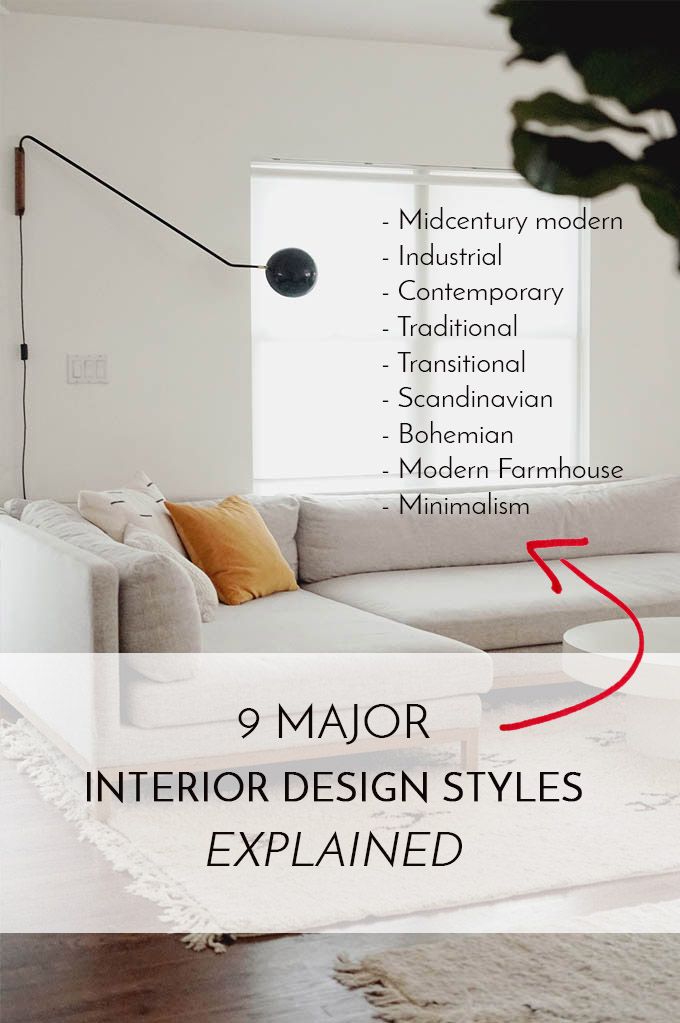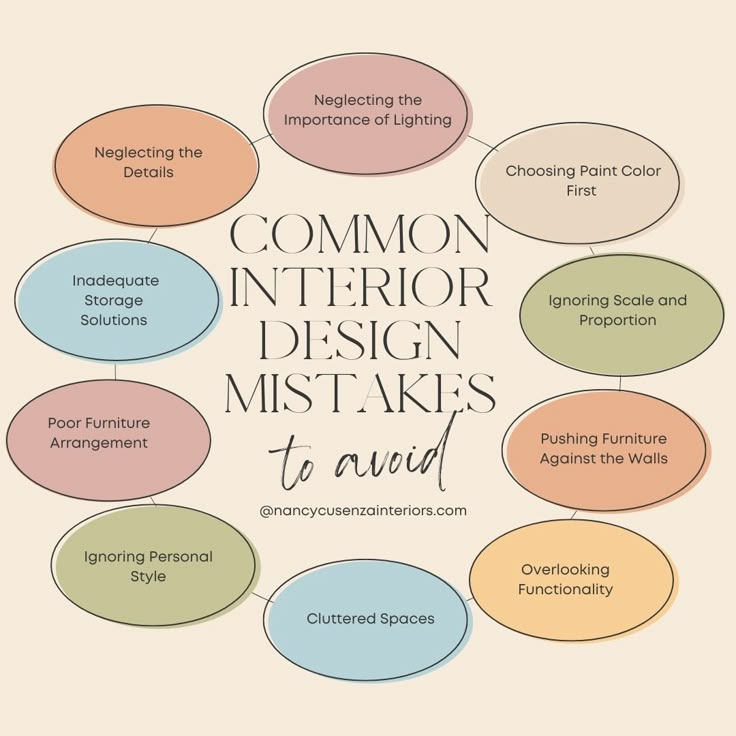The Transformative Power of Interior Design
Have you ever stepped into a beautifully designed room and immediately felt a sense of calm, inspiration, or joy? That’s the power of thoughtful interior design. More than just arranging furniture, interior design is about creating spaces that enhance your daily life—whether it’s a cozy living room that invites relaxation, a home office that boosts productivity, or a bedroom that provide a personal feel.

Source: Pintrest
Many people assume that good design requires a big budget or professional help, but the truth is, anyone can learn the fundamentals of styling a space. This comprehensive guide will walk you through everything you need to know—from understanding basic design principles to choosing your personal style, arranging furniture like a pro, and avoiding common decorating mistakes. By the end, you’ll have the confidence to transform any room into a space that’s both functional and aesthetically pleasing.
Chapter 1: Understanding the Basics of Interior Design
What Exactly Is Interior Design?
Interior design is the art and science of enhancing the interior of a space to achieve a healthier, more aesthetically pleasing environment. It’s not just about making a room look pretty—it’s about optimizing functionality, improving flow, and creating harmony between all elements.
At its core, interior design involves:
– Space planning (arranging furniture for optimal movement and use)
– Color theory (selecting hues that evoke the right mood)
– Material selection (mixing textures for depth and interest)
– Lighting design (balancing natural and artificial light)
– Personalization (infusing your unique style into the space)
The 7 Fundamental Principles of Interior Design
Before you start decorating, it’s essential to understand these key principles:
1. Balance
Balance ensures that a room feels stable and visually pleasing. There are three types:
– Symmetrical Balance (mirrored layout, traditional and formal)
– Asymmetrical Balance (different but equally weighted elements, more dynamic)
– Radial Balance (arranged around a central point, like a round dining table)
2. Proportion & Scale
Furniture and decor should fit the size of the room. A massive sectional in a tiny apartment will feel overwhelming, while a small rug in a large living room will look out of place.
3. Rhythm & Repetition
Create visual flow by repeating colors, patterns, or shapes. For example, if you have a blue sofa, echo that color in throw pillows, artwork, or a rug.
4. Harmony & Unity
All elements should work together to create a cohesive look. Avoid clashing styles—if your room is modern, don’t suddenly add a vintage floral armchair unless intentionally mixing styles.
5. Contrast
Add excitement by pairing opposites:
– Light vs. dark colors
– Smooth vs. rough textures
– Modern vs. vintage pieces
6. Emphasis (Focal Point)
Every room needs a standout feature—a fireplace, a bold piece of art, or an accent wall. Arrange furniture to draw attention to it.
7. Functionality
A beautiful room is useless if it doesn’t serve its purpose. Always prioritize comfort and usability.
Chapter 2: Finding Your Personal Design Style
Exploring Popular Interior Design Styles

Source: Pintrest
Before decorating, it helps to identify which styles resonate with you. Here are some of the most common:
1. Modern
– Characteristics: Clean lines, neutral colors, minimal decor
– Best for: Those who love sleek, uncluttered spaces
2. Minimalist
– Characteristics: “Less is more,” functional furniture, lots of white space
– Best for: People who dislike clutter and prefer simplicity
3. Traditional
– Characteristics: Classic elegance, rich woods, ornate details
– Best for: Fans of timeless, cozy interiors
4. Bohemian (Boho)
– Characteristics: Eclectic, colorful, layered textures, global-inspired decor
– Best for: Free spirits who love a relaxed, artistic vibe
5. Industrial
– Characteristics: Exposed brick, metal accents, raw finishes
– Best for: Urban lofts or those who love a rugged, edgy look
6. Scandinavian
– Characteristics: Light woods, cozy textiles, functional simplicity
– Best for: Those who love bright, airy spaces with warmth
7. Eclectic
– Characteristics: A mix of styles, patterns, and eras – Best for: Creative souls who want a unique, personalized space
How to Discover Your Style
1. Browse Inspiration: Save images from Pinterest, Instagram, and simila sites.
2. Identify Patterns: Do you prefer neutral tones or bold colors? Clean lines or cozy textures?
3. Experiment: Try small decor swaps before committing to big changes.
Chapter 3: The Step-by-Step Guide to Styling Any Space
Step 1: Assess Your Space
– Measure the room and note windows, doors, and architectural features.
– Observe natural light sources and traffic flow.
Step 2: Plan Your Layout
– Sketch a floor plan or use free tools like Room styler or Planner 5D.
– Arrange furniture for easy movement (leave at least 3 feet for walkways).
– Create conversation areas (e.g., sofas facing each other).
Step 3: Choose a Color Palette
– Use the 60-30-10 rule:
– 60% dominant (walls, large furniture)
– 30% secondary (upholstery, curtains)
– 10% accent (decor, throw pillows)
Step 4: Select Furniture
– Prioritize comfort and functionality.
– Mix materials (wood, metal, glass) for depth.
– Invest in key pieces (like a quality sofa) and save on accessories.
Step 5: Layer Textures & Patterns
– Combine different textures (e.g., velvet sofa + jute rug).
– If using patterns, stick to a cohesive color scheme.
Step 6: Lighting Design
– Use ambient (overhead lights), task (reading lamps), and accent (wall sconces).
– Maximize natural light with mirrors and sheer curtains.
Step 7: Accessorize Thoughtfully
– Add personality with art, plants, books, and souvenirs.
– Avoid clutter—edit as you go.
Chapter 4: Common Interior Design Mistakes & How to Avoid Them

Sorce: Pintrest
❌ Overcrowding – Less is more. Leave breathing room.
❌ Ignoring Scale – A tiny rug under a large sofa looks awkward.
❌ Poor Lighting – Dark corners make a space feel unwelcoming.
❌ No Focal Point – Every room needs a standout feature.
❌ Sacrificing Comfort for Style – A beautiful but uncomfortable chair is pointless.
Chapter 5: Budget-Friendly Design Tips
💰 Thrift & DIY – Second-hand stores and upcycling save money.
🔄 Rearrange Furniture – A new layout refreshes a room for free.
🎨 Paint or Wallpaper – An accent wall makes a huge impact.
💡 Update Small Details – New throw pillows or plants can transform a space.
Final Thoughts:
Making the Space Uniquely Yours, Your home should tell your story. Display personal items like:
- – Family photos
- – Travel souvenirs
- – Handmade art
Remember, great design evolves—keep refining as your tastes change.
FAQs:-
Q: How do I decorate a small space without it feeling cramped?
A: Use multi-functional furniture, mirrors, and vertical storage.
Q: Can I mix different design styles?
A: Yes! Just keep a unifying element (like color or material).
Q: What’s the easiest way to refresh a room?
A: Paint, new lighting, or rearranging furniture.
Now it’s your turn! What’s your biggest design challenge? Share in the comments—we’d love to help!

